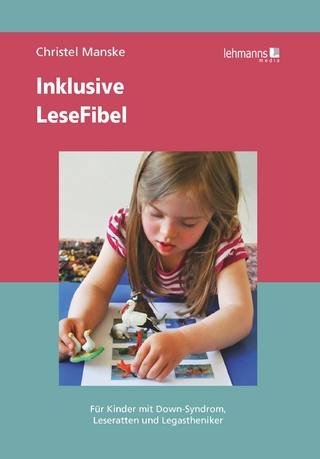
The Theory and Practice of Voice in Early Childhood
Routledge (Verlag)
978-0-367-20108-1 (ISBN)
- Titel z.Zt. nicht lieferbar
- Versandkostenfrei innerhalb Deutschlands
- Auch auf Rechnung
- Verfügbarkeit in der Filiale vor Ort prüfen
- Artikel merken
Seeing young children as competent and capable social actors, The Theory and Practice of Voice in Early Childhood looks at how we can better understand young children’s perspectives. Drawing on the ‘Look Who’s Talking’ project, it focuses on the eight talking point posters: voice, democracy, culture, listen with purpose, space and place, skills and tools, enable and build capacity to help readers critically reflect on what voice means to them and for the children with whom they work.
Combining the work of scholars and academics with front line workers and practitioners, each section groups two of the posters and provides an overview of the key theory followed by international case studies to illustrate how this thinking might be translated into practice. The book looks at all aspects of children’s voice and how to ensure that all children, including those traditionally viewed as too young, with special needs or too disengaged, have a voice.
Including reflections and suggesting points for exploration and dialogue between practitioners, families and children, this will be valuable reading for those who wish to make the ideological principles of children’s voice a practical reality.
Lorna Arnott is Senior Lecturer in the School of Education at the University of Strathclyde, UK. Kate Wall is Professor of Education at the University of Strathclyde, UK.
Prologue: The Look Who’s Talking Project: Principles and Practices for Eliciting Voice Section 1 Voice and Democracy 1. Theorising Voice and Democracy 2. Under Threes as Active Meaning Makers in England 3. Map-do-review: Children as Leaders and Planners in Scotland 4. Babies’ Voices as Multimodal Expressions in England 5. Children as Informed Architects of their Own Learning Spaces in Scotland Section 2 Culture of Voice and Listening 6. Theorising Power and Listening: The Route to a Culture of Voice 7. Children’s Views about their Nursery Experiences in Jordan 8. Adapting the Families Connect Programme for Three-Year-Olds: A Case Study 9. Visual Methods for Encouraging Adult-Child Dialogue in Scotland 10. Learning and Sharing the Language of the Child in Scotland Section 3 Spaces, Places, Skills and Tools for Voice 11. Theorising Spaces, Places, Skills and Tools for Voice Work in Early Childhood 12. Photography as Expressive Voice in New Zealand 13. Pedagogical Documentation Tools as a Culture of Children’s Voice in Turkish Early Years Settings 14. Children’s Involvement in Auditing the Learning Environment in Scotland 15. Marvellous Mealtimes at Bowhouse Early Learning and Childcare Centre in Scotland Section 4 Enabling and Building Capacity for Voice 16. Theorising Enabling and Building Capacity for Voice 17. Going on Trips: Creating Opportunities for Children to be Heard in Norway 18. Advocating for Play-Inspired Methods for Voice in Qatar 19. Progressing Children’s Voices in Rural Armenia 20. Towards a Baby Signing Approach (BSA) to Voice in England Section 5 Conclusions and Useful Resources 21. Concluding Thoughts on Eliciting Voice from Birth to Seven
| Erscheinungsdatum | 18.03.2022 |
|---|---|
| Zusatzinfo | 17 Tables, color; 40 Line drawings, color; 87 Halftones, color; 127 Illustrations, color |
| Verlagsort | London |
| Sprache | englisch |
| Maße | 174 x 246 mm |
| Gewicht | 740 g |
| Themenwelt | Sozialwissenschaften ► Pädagogik ► Schulpädagogik / Grundschule |
| Sozialwissenschaften ► Pädagogik ► Vorschulpädagogik | |
| ISBN-10 | 0-367-20108-9 / 0367201089 |
| ISBN-13 | 978-0-367-20108-1 / 9780367201081 |
| Zustand | Neuware |
| Informationen gemäß Produktsicherheitsverordnung (GPSR) | |
| Haben Sie eine Frage zum Produkt? |
aus dem Bereich


